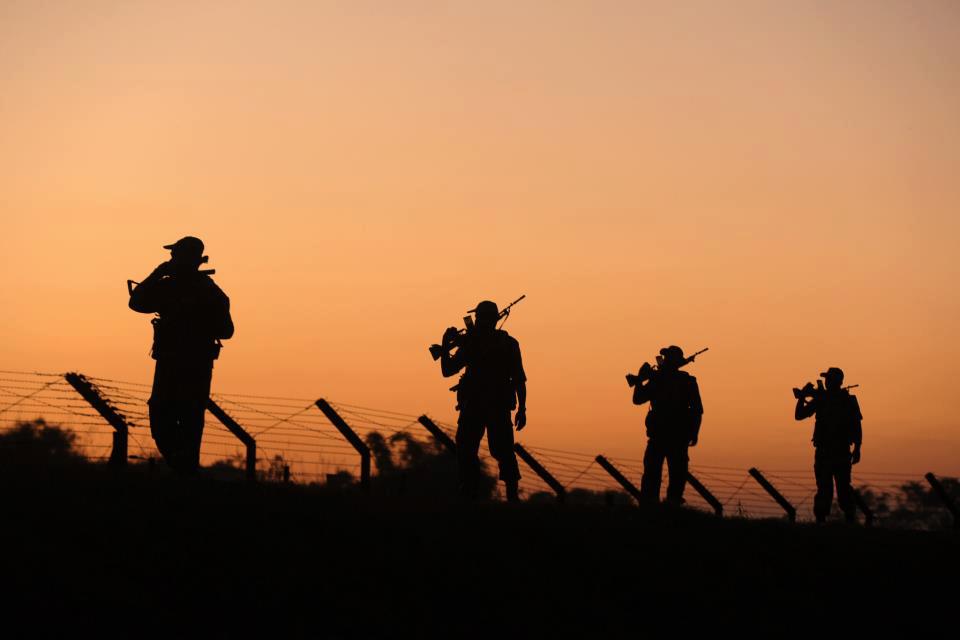IDR Blog
Why Indian Army Chief’s Ceasefire Statement Antagonised Rawalpindi?
With Pakistan army’s media wing Inter Services Public Relations [ISPR] tweeting that “Indian COAS [Chief of Army Staff] claiming LOC [Line of Control] ceasefire holding because they negotiated from position of strength, is clearly misleading,” it’s apparent that this statement has touched some raw nerve in Rawalpindi. Similarly,though ISPR’s claim that this ceasefire “… was agreed only due to Pakistan’s concerns for safety of people of Kashmir living on both sides of LOC” is evidently aimed at enhancing Pakistan army’s concern for Kashmiris, the sudden emergence of this new found love after decades of bloodletting isn’t quite convincing.
It’s intriguing why Rawalpindi decided to react to a statement that was in no way offensive, unless of course what was said contained an element of truth. Even though a UNSC brokered ceasefire between India and Pakistan came into effect in 1949 and hostilities ended, but guns never fell silent along the LOC and intermittent exchanges of fire soon became the new normal. This continued for more than half a century, till Pakistan President Pervez Musharraf proposed a LOC ceasefire in 2003, which was accepted by New Delhi.
This ceasefire held out for about a decade and since it was a win-win situation for both sides, there was no serious discussion on what prompted the unrepentant Kargil intrusion architect to offer a ceasefire along the LOC. However, most Pakistan watchers agree that the inordinately high casualties being suffered by the Pakistan army rank and file due to retaliatory fire from the Indian side was one of the prime reasons behind this unprecedented move. Considering both the quantum quantitative and qualitative edge in armament and advanced munitions that Indian army enjoys over its Pakistani counterpart, this is a logical inference.
The naysayers will however not agree and even argue that statics prove that casualties suffered by Pakistan army on LOC aren’t too high and while their contention isn’t irrational, it’s nevertheless imprecise. This is because unlike the Indian army which doesn’t mock the supreme sacrifices made by its soldiers on LOC, Pakistan army has a pronounced proclivity for concealing its losses- and if it can go to the extent of disowning the dead bodies of its own soldiers during the 1999 Kargil war, then concealing statistical data of LOC fatalities isn’t a big deal!
Those who seek to defend Pakistan army by saying that Pakistan army’s refusal to accept mortal remains of their dead soldiers during the Kargil war was an aberration and hence shouldn’t be quoted as a prevailing practice are probably unaware that the Pakistan army has actually gone to the extent of institutionalising ‘non-disclosure’ of LOC casualties- albeit, in a very clumsy manner. In 2017, Muttahida Qaumi Movement Party Member Senator Ateeq Sheikh had moved a notice in Pakistan’s Senate seeking details of Pakistani citizens killed by Indian firing along the LOC.
While replying on behalf of the then Defence Minister Khawaja Asif, Minister of State for Water and Power Abid Sher Ali only furnished details of civilian casualties, saying that “We have written to the GHQ [General Headquarters] for the details of our soldiers who have lost their lives serving along the LOC. However, the military authorities refused to share the details citing security concerns.” When Ali told the House that “We do not want our enemy to know how many soldiers laid down their lives,” Senate Chairman Mian Raza Rabbani was so enraged by this bizarre response that he queried- “Will the order of Parliament prevail, or that of the Ministry of Defence, or GHQ?”
Coming back to the present. While Rawalpindi may be concealing Pakistan army casualty figures,but open-source intelligence [OSINT] enthusiasts who painstakingly collate such data have provided shocking details alongwith credible evidence. On such twitter handle which goes by name of @Nexoft117, compiled a list of 64 Pakistani soldiers who were killed within a five-week period [from 27th July to 31st August 2019]. Surprisingly, though the otherwise overactive ISPR didn’t challenge this highly damaging claim, but this handle was suspended by Twitter-and there are no prizes for guessing on whose complaint this would have happened!
So, since Indian army chief’s ceasefire comment has brought out the truth that heavy casualties had compelled Pakistan army to accept ceasefire, ISPR’s knee-jerk response to save its image, was expected. It was also not very surprising that in doing so, ISPR ended up in a ‘foot-in-mouth’ situation by specifically stating that Pakistan army had accepted ceasefire “only due to Pakistan’s concerns for safety of people of Kashmir living on both sides of LOC.”
Doesn’t ISPR’s statement clearly unmask the duplicity in Pakistan army chief Gen Qamar Javed Bajwa’s pompous declaration that “We stand firmly committed to the ideal of mutual respect and peaceful co-existence?” So, how can one take his pontificating that “It is time to extend the hand of peace in all directions. Pakistan and India must also resolve the longstanding issue of Jammu and Kashmir in a dignified and peaceful manner” seriously?





